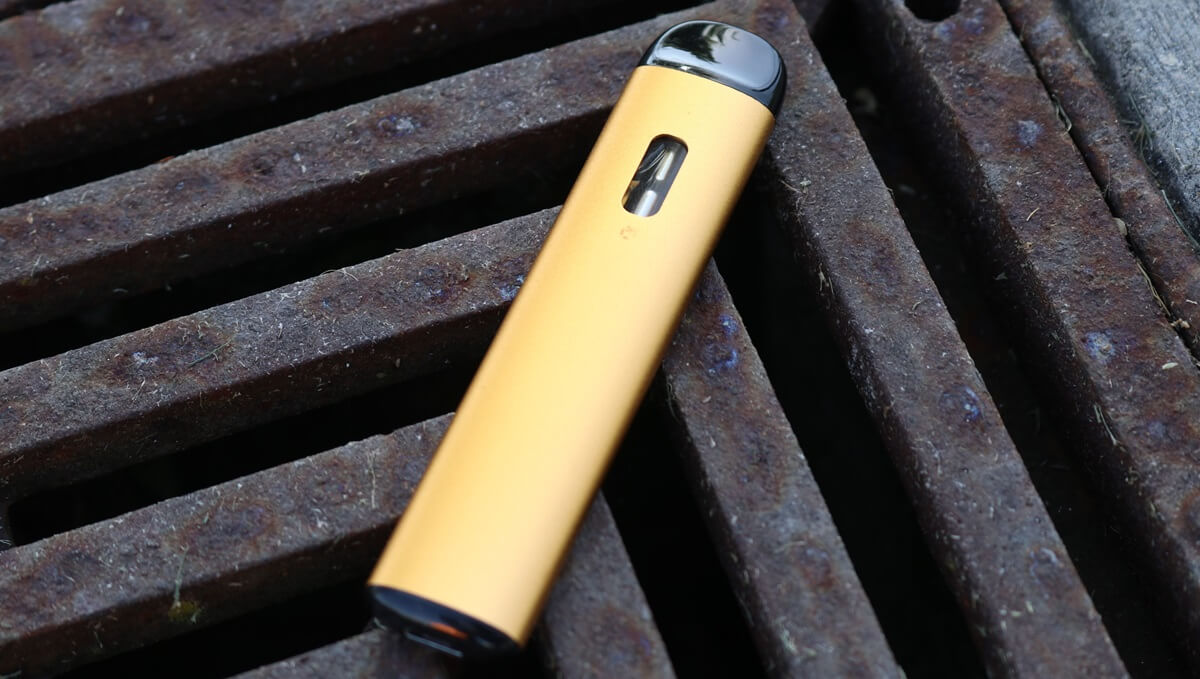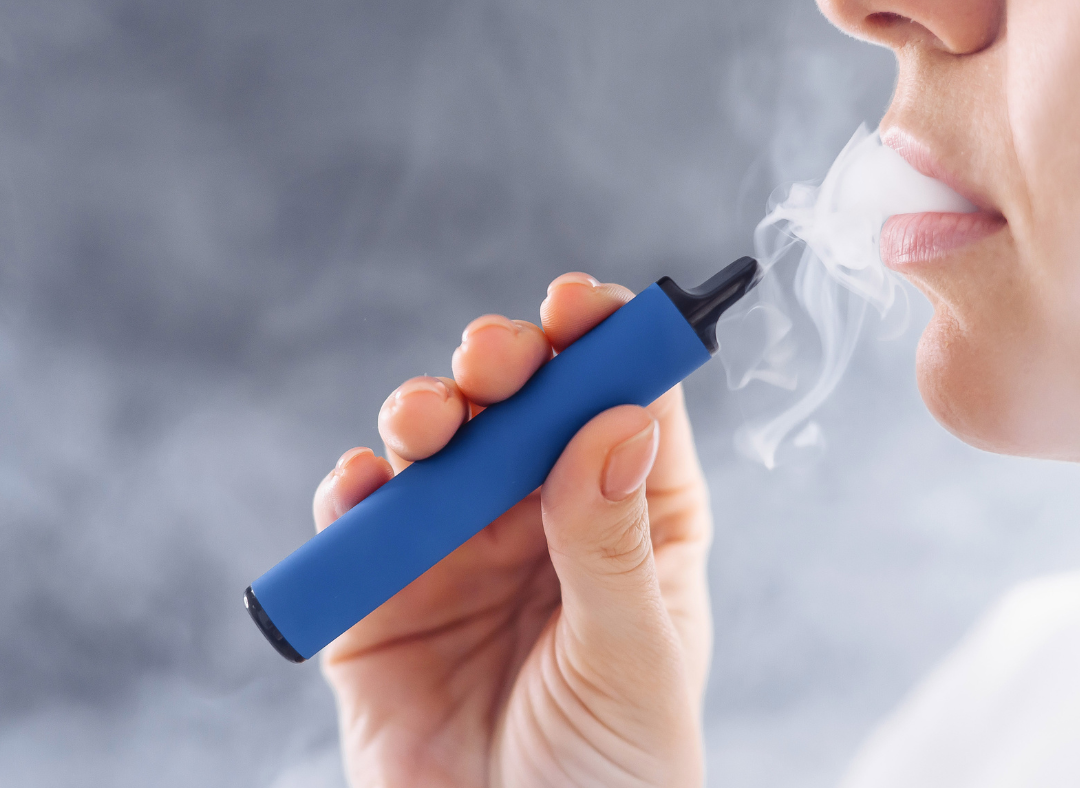What are disposable vapes?
Disposable vapes are exactly what the name implies, a disposable e-cigarette. They are pre-filled and battery powered e-cigarettes, ready for immediate use, and designed to be thrown away afterwards. This is in contrast to refillable or pod device e-cigarettes, where parts of the product including the liquid, vape pods, coils etc can be replaced and the e-cigarette reused over a much longer period of time.
The popularity of disposable vapes comes from their hassle-free experience, their lower singular price of entry, and their ability to be used immediately at purchase. These factors mean that they are prime for people who have never vaped before and want to try it, in particular being aimed at a younger audience.
Disposable vapes have many issues raised by various groups, both environmentally and also from a safety perspective. In this article we will delve into detail on disposable vapes, and try to unpick some of the reasons that they might not be the best option when looking at vaping products for smoking cessation.
Health risks of using Disposable Vape Devices
We will briefly overview the known health risks of vaping, the specific risks of disposable vapes as opposed to refillable vapes, and how to minimise those risks.
Common illnesses caused by Vaping
There are limited long-term studies into vaping’s effect on health given it has only been around for 15 years or so, but given the health risks we know about smoking, the evidence is clear that vaping is safer than smoking. The contrast to smoking is stark where 2 in 3 people who smoke will die from a smoking related illness.
No medical professional would recommend starting an addictive substance such as nicotine if it were not being used to stop smoking. Because of this, we should be clear that vaping and other safer forms of nicotine delivery such as nicotine patches, nicotine gum and nicotine pouches should be used for smoking cessation only, given they have the potential for addiction and harm.
With regards to the potential side effects and illnesses related to vaping, the difference to other methods of nicotine (patches, gum etc) is that there is a method of inhalation. The process of inhaling vapour and contact with lung tissue is likely a more risky method of nicotine transfer than patches or gum. The ingredients found in freebase nicotine and nicotine salts that are used in vaping contain a number of other chemicals which can in particular affect users with pre-existing health conditions. For those who are smoking and want to consider vaping, they should consult their doctor or a specialist smoking cessation service before starting vaping.
The most common side-effects of vaping include:
- coughing
- dry mouth and throat
- shortness of breath
- mouth and throat irritation
- headaches
Nicotine-containing vapes have the potential for addiction which can be particularly harmful to young people. The developing brains in younger adults and children make them more susceptible to addiction. Nicotine exposure can also lead to issues with attention, learning and memory. This is one of the big drivers for the Australian government ensuring that vaping is accessible to smokers that need it to help stop smoking, whilst keeping it out of the hands of young people who may want to try and vape recreationally, potentially leading to nicotine addiction.
Safer vaping options
Whilst in theory both refillable, pod devices and disposable vapes have a similar risk profile with regards to the process of vaping, there are multiple reasons why closed system devices – also known as pod devices are considered to be far safer than disposable vapes.
Pod devices contain a replaceable pod that contains nicotine in it. Most pod systems have the heating coil as part of the pod itself. This means that every time the pod is changed, the heating coil is changed. One of the potential risks with vaping is if the nicotine liquid is heated to an incorrectly high temperature which risks burning the liquid and creating chemicals that are not meant to be created under perfect working conditions. Coils that are in need of a change can heat irregularly, and cause this to happen. The use of a pod system ensures that one of the potential risk elements is hopefully negated by the system build.
Disposable vapes in contrast have a battery powered heating element that heats a nicotine soaked sponge. There is some hypothetical risk with this method if there was incorrect heating of the nicotine liquid or burning of the sponge.
There have also been numerous stories in the press of disposable vapes being removed from the shelves because they have higher nicotine concentrations than the legal limit. This is a lower risk with refillable vapes where you have more control over the concentration of nicotine in the e-liquid you use.
Specific to Australia in 2023, nicotine vapes are commonly available illegally over-the-counter, imported with no documented nicotine content. There are understandable concerns about the production quality and risk of these unregulated products.
How to avoid these health risks?
The first step to avoid risks associated with illegal and low quality vapes, is to avoid purchasing them without a prescription. Speak to your regular GP, or to a specialist online provider like Quit Clinics who offer an online and telehealth service to support users with private nicotine vaping product prescriptions. All Quit Clinics doctors are Nicotine Authorised Prescribers and have both vast experience and a specialist interest in smoking cessation.
The current body that regulates GPs, the Royal Australian College of General Practitioners (RACGP), recommends that doctors only consider prescribing nicotine vapes as a ‘second-line’ therapy. This means that GPs should only consider prescribing vapes if a smoker has previously tried to quit using other more established methods, such as nicotine gum or patches.
The logic behind a first or second-line therapy is partly due to the time that traditional nicotine replacement therapy (patches, gum) have been around, and the fact that they have been assessed and regulated as medications. Vaping in contrast has been around for a shorter time, and is not regulated as a medication. Because there are more unknowns with vaping given the method of inhaling vapour and potential risk this poses, it is reasonable that your doctor suggests vaping as a viable way to stop smoking if the other options have been exhausted or are not viable.
Vape devices are a great way to give up smoking when compared to the risks posed by tobacco products. However, if you have never used a vaping device or smoked before, be aware that vapes contain nicotine (like cigarettes) and nicotine is addictive – no doctor would recommend starting vaping if you are not currently smoking. There is a lot more research and information needed to be clear on what the long term health effects from vaping are.
If you want to stop vaping, visit the Alcohol and Drug website for more information and help.
Environmental Risks of Disposable Vape Devices
When many people make decisions in the modern world, they think not only of their own health and wellbeing, but that of the people around them as well as the environment. This is no different with vaping, and negative environmental effects are a big drawback of disposable vapes – and part of the reason why banning them has been suggested by both environmental and political parties. In this section we’ll go through the details why.
Chemicals used in disposable vape devices
The contents of the vaping liquid in disposables are advertised to include nicotine, flavoring chemicals, and carrier solutions (e.g., propylene glycol), but studies have also found harmful and potentially harmful organic compounds and metals, with a few metals yielding over-acceptable cancer and/or non-cancer risks.
Disposable vapes also contain the vape casing itself. This includes many different components including batteries, heating element, rubber seals and a glass sleeve. In the UK and Australia, disposable vapes are actually classified as an electronic product, so should not be thrown away with normal household goods. Unfortunately, we have all seen that many disposable vapes don’t even reach a bin in general, having a large environmental impact.
Harmful effects of the above Chemicals to the environment and air quality
Vapes that are left on the ground cause a significant environmental risk as they can lead to the release of certain hazardous chemicals such as lithium and plastics. Either of these chemicals can affect air quality.
Even disposable vapes that are thrown away, but in the wrong rubbish, can cause explosions at waste disposal centres where batteries ignite.
Waste Management – How to Properly Dispose of Disposable Vapes
We will now address how to properly throw away disposable vapes to reduce their environmental impact.
Current waste management practices for disposable vape devices
Due to the battery inside, disposable vapes need to be thrown away separately from normal rubbish. The Australian government recommends that they are disposed of at a household recycling centre, the local pharmacy where you purchased the device, or the local community recycling centre.
Environmental consequences of improper disposal
Improper disposal of vapes leads to introducing not only the e-liquid into the environment but also the casing, batteries, sealants and plastics contained in the container itself. This leads to the release of a number of harmful chemicals that can have significant environmental impact, including heavy metals.
Recycling options and limitations
There are a growing number of schemes to recycle vapes, with Gaiaca and Terracycle for example, offering services to dismantle, clean and convert vaping devices into raw materials in the USA and Canada respectively. There is currently no national disposable vape recycling programme in Australia.
Alternatives to Disposable Vape Devices
We will now run through the alternative options for disposable vapes that could offer more environmentally friendly solutions.
Refillable vape devices
Refillable vape devices describe those which are multi-use machines, where e-liquid is replaced, but the main device itself is reused over and over. The most common types of these either use vape pods (small pods that are prefilled with e-liquid) or more traditional devices that have a container that is refilled from a bottle.
Benefits of using refillable devices
Whilst there are still some environmental concerns around refillable vape devices, mostly relating to the disposal of used pods for closed system devices, used coils and spilled e-liquid, fundamentally using a refillable model produces less plastic, uses less batteries and creates less of an environmental effect. Additionally, it is the refillable vape devices that are currently easier to recycle, as opposed to disposable ones. They are also likely to be cheaper over the long run, even if they have a greater upfront cost.
Long-term environmental impact of using refillable devices
With ongoing work in the recycling of vaping devices, we may be close to seeing widespread options available to reduce the environmental impact of vaping. In our current world, using a refillable device significantly reduces your environmental impact when compared to using disposable vapes.
FAQ’s
How long do disposable vapes take to decompose?
With disposable vapes containing not only heavy metals but hard plastics, they could take over 1000 years to decompose.
Does Vaping Cause Carbon Emissions?
Vaping causes carbon emissions through the creation of the device itself (through plastic creation and heavy metal use). This is exacerbated with disposable vapes as more plastic is used by each person when compared to refillable devices.
How long do vape chemicals stay in the air?
A study into vapes used in indoor spaces found that e-vapor evaporated in seconds, with chemical levels returning to background levels. This is opposed to cigarettes that took 30-45 minutes.
Do disposable vapes have toxic metals?
Yes, in particular chromium and nickel.
Are disposable vapes recyclable?
In Australia, the batteries from reusable vapes can be removed and recycled. Disposable vapes cannot be recycled.
Learn more about nicotine at Quit Clinics
In summary, disposable vaping has a significantly higher environmental impact than refillable vapes. They are also a higher-risk way of vaping when compared to the other options available. There are some potential changes looking at totally banning disposable vapes here in Australia, and we will keep you informed as and when these regulations and rules change.
If you would like to learn more about vaping, the laws around it, and the science and research behind it, check out some of our Quit Clinics blogs below.
- Traveling to Australia with nicotine vape products – What you need to know
- Vaping Laws in Australia – What you need to know
- 12 tips to help you quit smoking
- The latest Recreational Vape Ban






